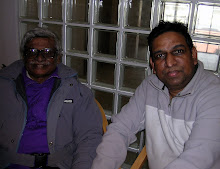Language the defining feature of human intelligence
By Mark Henderson: Analysis
Language, according to the American neurobiologist William Calvin, is “the defining feature of human intelligence”.
With due respect to the communication skills of dolphins, chimpanzees, birds and bees, Homo sapiens is the only existing species with the power of speech. It seems to be among the qualities that separates us from other animals, that makes us human. When the FOXP2 gene and its role in language was first identified in 2001, therefore, it is hardly surprising that scientists immediately began to ask questions about its role in evolution. Might this be a “language gene” that sets humans apart, a passage of DNA that has evolved uniquely in one species?
The answer is both yes and no. At first, research into the gene’s evolution yielded disappointing results. Human FOXP2 was very similar to the version found in mice, with just three changes in DNA spelling. Yet these three changes seem to have been very important. “We had been thinking, naively, with just three substitutions, that there was nothing interesting about it,” Dr Fisher said. “But what was fascinating was that of these three changes, two of them had occurred after the divergence between humans and chimps. It’s an acceleration of evolution.”
Molecular techniques then revealed that these changes occurred around 200,000 years ago — at just the point at which modern humans were evolving. This has led to much speculation about whether FOXP2 is a “gene for speech” — particularly given that people with major mutations, like the KE family, have major language defects.
Dr Fisher thinks this is going too far. “I don’t think there are likely to be any genes that suddenly enabled speech and language to pop up out of nowhere,” he said. “For one thing, the first person wouldn’t have had anyone to talk to.”
That said, the new version of FOXP2 might well have given people who had it an advantage. Perhaps early humans were already starting to use their voices to communicate, and this variant allowed them to do so more readily. Mouse research suggests that FOXP2 is important in sequencing movements — an important skill for speech.
“Changes to FOXP2 that improved your ability to sequence speech would have provided a natural advantage, and spread rapidly,” Dr Fisher said. “That’s the speculation, though we’ll never know for sure why this version spread.” The partial sequencing of the Neanderthal genome has also raised questions about FOXP2. Research led by Svante Paabo, of the Max Planck Institute in Leipzig, has suggested that Neanderthals had the same version of the gene as humans: perhaps they could speak too?
Dr Fisher thinks they might well have been able to, but the data on Neanderthal FOXP2 is not compatible with the date at which the human version evolved. “I think the most likely thing is that one of the estimates is wrong,” he said.
Now FOXP2 research has moved on from investigating the past, to searching for other genes that could improve diagnosis and management of common language disorders.
This underlines how basic research driven by the curiosity of scientists results in unexpected benefits. Scientists are sometimes criticised for following interesting leads that seem to be of little relevance to the world’s major problems. Yet it is very often this “blue skies” approach to research that yields the greatest practical results.
“It’s certainly fascinating the way that this one little starting point has related to so many aspects of science,” Dr Fisher said. “You’ve got the evolutionary story, you’ve got questions about the way the brain processes language, and then you’ve got these medical and social issues that this could have ramifications for people’s learning.”
dailynews.lk
Subscribe to:
Post Comments (Atom)




.jpg)

































1 comment:
Please change background color of the blog..
Post a Comment